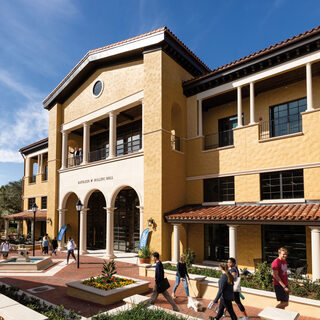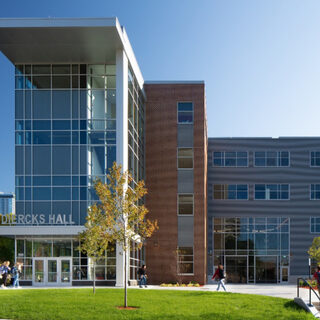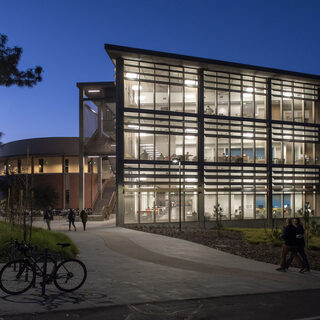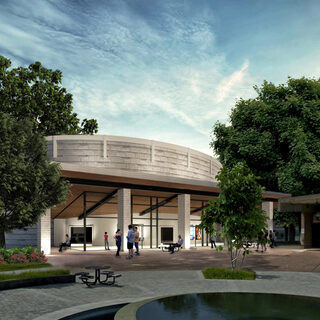Tradeline's industry reports are a must-read resource for those involved in facilities planning and management. Reports include management case studies, current and in-depth project profiles, and editorials on the latest facilities management issues.
Latest Reports
Silicon Valley Vibe Permeates Higher Ed Building Design
A onetime University of Maryland student who struck it big in the tech industry returned to donate significant funding for a new computer science center—one that brings Silicon Valley facilities, visible building tech, and up-to-the-minute environmental controls into College Park. Brendan Iribe left school and ended up cofounding Oculus, which was later sold to Facebook for $2 billion. He returned to Maryland with a vision for inspiring innovators of the future by providing them with spaces in which to create new technologies.
Curricular and Co-Curricular Spaces Merge Seamlessly in a Single Academic Facility
Kathleen W. Rollins Hall at Rollins College in Orlando, Fla., embodies the social/entrepreneurial mission of the college and exemplifies the meaning of an applied liberal arts education. Opened in January 2020, the 29,225-sf facility collocates 10 programs that immerse students in global learning opportunities and partnerships, both on and off campus.
Application-Focused AI Curriculum at Milwaukee School of Engineering’s Diercks Computational Science Hall
Dwight and Dian Diercks Computational Science Hall at Milwaukee School of Engineering (MSOE) is far more than the academic home for a new degree program in leading-edge technology. It is full of formal and casual study spaces designed to attract students from all disciplines on campus. It also boasts a 256-seat auditorium and a 2,300-sf atrium, both inviting venues for school functions and community events.
UC Irvine Looks to the Future with 100 Percent Active Learning Facility
The Anteater Learning Pavilion (ALP) at the University of California, Irvine (UCI) is the first university building in the state dedicated to using design and technology to increase innovation and collaboration. The three-floor, 94,000-sf ALP has flexible classrooms, mobile furniture, and wireless connectivity throughout, including projection and display technology, to make using technology in the classroom seamless. Opened in September 2018 for a total cost of about $67 million, the ALP provides much-needed room for growth, with a total of 1,446 instructional spaces, 392 informal learning spaces, and 44 staff offices. Michael Dennin, Ph.D., vice provost of Teaching and Learning and dean of the Division of Undergraduate Education at UCI, participated in the building planning committee, and encouraged the commitment to 100 percent active learning space.
University Facilities Planners Prioritize New Construction and Renovations
There is no question that the pandemic has taken a toll on higher education institutions, but they are planning for a future that includes fully engaged students and campuses bustling with activity. A Tradeline survey of 115 colleges and universities and the architectural and engineering firms that serve them shows they are focused on renovation, modernization, and major new construction of everything from life sciences facilities to theaters; 58 percent reported that they have one or two major projects in the planning or pre-planning stages.




